Calexit: Is Secession the Answer?
Keith Preston, American Renaissance, December 13, 2016
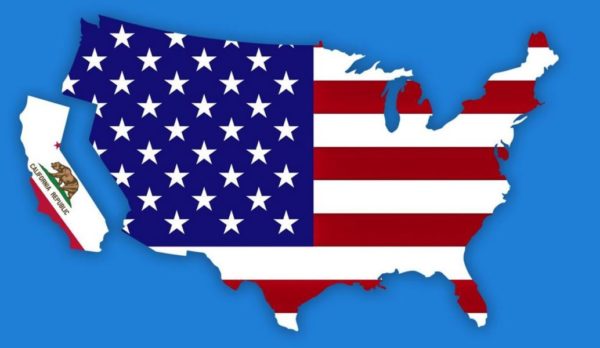
American political culture has come to be defined by enormous divisions. Social psychologist Jonathan Haidt notes that present day political polarization is wider than at any time since the Civil War. Social science research finds that more Americans would oppose their son or daughter marrying someone of the other political party than would oppose marriage outside of their race, religion, or social class.
The Right and Left are coming to regard one another not merely as competitors, but as threats to the nation or even as personal enemies. Polarization has been sharpened by the election of Donald Trump. Indeed, the reaction of the Left has often been one of panic, hysteria, or terror. One leftist blogger professed to be as terrified on the night of Mr. Trump’s election as he had been when he was once arrested and put in jail. Intense polarization of this kind inevitably leads to talk of secession.
I have a fair amount of personal experience with this question. For nearly 20 years, I have advocated dissolving the US federal system through regional and local secession movements from across the political spectrum. Although I am a left-wing anarchist, I have also tried to build bridges between those opposed to, or under attack by, the US power elite from across the political and cultural spectrum–including racial nationalists.
The Trump victory has been a particular stimulus in California, where progressives have suggested that much of the rest of the nation is so out of touch with the values of their state that California should consider seceding. A group called “Yes California” has formed for the purpose of placing an initiative on the state ballot in 2019 approving California’s exit from the United States. This project has come to be known as “Calexit” as a nod to the “Brexit” referendum.
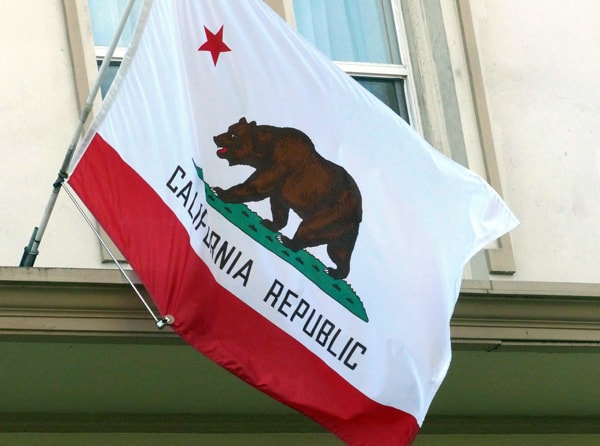
The flag of California waves on a house in Berkeley, California. (Credit Image: © Barbara Munker/DPA via ZUMA Press)
Secessionist proposals are not new to California. More than 200 have been advanced since California became a state in 1850. Most have not called for California to leave the US, but to divide the Golden State into two or more states. The most recent proposal of this kind was to divide California into no fewer than six states. The proponents of “Six Californias,” as the measure came to be called, hoped to have their proposal on the ballot in 2016 but failed to get enough signatures. The “Yes California” movement is hoping to acquire the signatures necessary to qualify for ballot status in 2019.
“Yes California” follows a trend that has existed since the George W. Bush era. So reviled were Mr. Bush and his supporters by progressives that left-leaning websites and blogs frequently floated a proposal to partition the red states and blue states into separate nations. They often suggested that the new red nation be known as “Jesusland,” in reference to the perceived dominance of Christian fundamentalists.
However, it is not just the Left that proposes secession. When President Barack Obama was re-elected in 2012, some conservatives responded by setting up state secession petitions through the White House petitioning system. Eventually, there were petitions for all 50 states. Six received at least 25,000 signatures, the minimum required for a response from administration officials. They were those for Florida, Alabama, Georgia, Mississippi, Louisiana, and Texas, with the latter receiving over 125,000 signatures.
Texas has been the state where secessionist sympathies have arguably been the most common in recent decades. Indeed, the efforts of modern Texan secessionists helped renew the interest in secession that developed during the 1990s. Texas was at one time an independent nation, established after secession from Mexico in 1836. Texas was subsequently annexed by the United States in 1845, only to secede once again in 1861 as part of the Confederacy. The defeat of the CSA in the Civil War largely ended talk of secession for 130 years, and the Supreme Court ruled in Texas v. White (1869) that unilateral secession by states is unconstitutional.
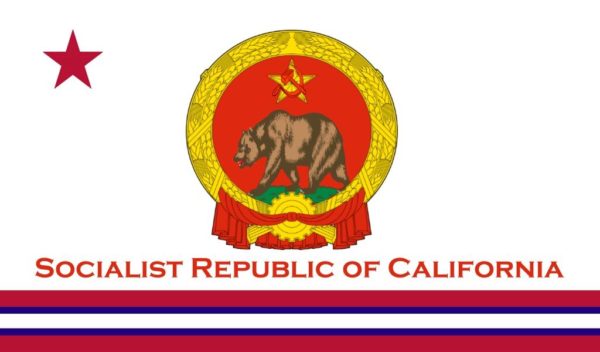
Credit Image: ColumbianSFR via DeviantArt
However, during 1990s a movement known as the “Republic of Texas” emerged, calling for Texan independence. The movement was comprised of multiple groups claiming the name “Republic of Texas.” Some of these overlapped with the “sovereign citizens,” supporters of “common law courts,” and tax resistors who also emerged during the same period. Some of the participants in these movements went to prison for illegal acts such as abduction and fraud.
A more credible group known as the Texas Nationalist Movement developed in the 2000s. Its leader, conservative Christian activist Larry Kilgore, ran for the US Senate in the GOP primary in 2008 on a secessionist platform and received over 225,000 votes. During the 2016 state Republican convention, secessionists came two votes short of forcing a secession debate onto the general convention floor.
Another secession movement that developed during the 2000s was the Second Vermont Republic, founded by the late economist Thomas Naylor in 2003. Its ambition was to reclaim the independent status Vermont held from 1777 – 1791. Naylor was supported by the veteran leftist writer Kirkpatrick Sale, who formed the Middlebury Institute to promote secessionist movements in the US.
In 2008, the Middlebury Institute commissioned a Zogby poll, which found that 20 percent of respondents favored the right of secession by states, and that 18 percent would be sympathetic to secession by their own state. The poll found that support for secession tended to be the highest among liberals, blacks, young people, and those lacking a college degree. This poll was taken before President Obama’s election.
A similar poll taken in 2014 by Reuters found that 24 percent of Americans either strongly supported or tended to support secession by their own state. However, the ideological leanings of those with secessionist sympathies were now different. Thirty percent of Republicans but only 21 percent of Democrats viewed secession sympathetically. This shift no doubt reflected the change from President Bush to President Obama. The 2014 poll showed the highest rates of sympathy for secession, at 34 percent, in Oklahoma, Texas, New Mexico and Arizona, with 25 percent in the Southeast supporting secession. This shows that the total volume of secessionist sentiment has remained relatively constant over the past decade, but its ideological and demographic base fluctuates sharply depending on which party holds the White House.
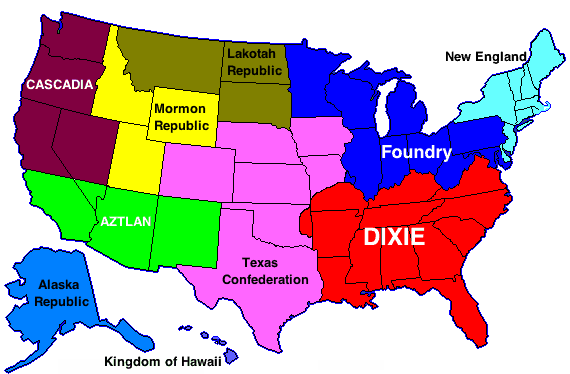
One of the many envisioned “break-ups” of America you can find online.
Although polls show a high level of support for secession in the abstract, this support rarely translates into political action. It is difficult to gauge how large organized secessionist activities actually are. A casual Google search will find countless websites, blogs, and other outlets discussing secession by some state, region, locality, or group. Left-wing media outlets often sound the alarm about the supposed rise of right-wing neo-secessionists who allegedly want to bring back the Confederacy.
However, online secessionists vary widely in sophistication and seriousness. Some movements are represented by serious organizations, such as Yes California, the Texas Nationalist Movement, the League of the South, the Alaskan Independence Party, and the Second Vermont Republic. Others often appear to be little more than a handful of people, or sometimes a single individual with a website or Facebook page.
Secessionists also differ in their objectives. Some want to secede from the US. Others want to partition a state, join another state, or combine multiple states into a regional block. Some secessionists want their region to join another nation (such as Canada), or have their city or county secede from their state and become an independent city-state, which may or may not remain in the US.
Others advocate the ideological or demographic colonization of some region without directly pushing for secession. One of these groups is the Free State Project, which has long been working to facilitate a libertarian colonization of New Hampshire. In the late 2000s, a group called Christian Exodus favored a conservative Christian colonization of South Carolina. Some white nationalists have long advocated white colonization of the Northwest. Interestingly, the Northwest is also home to a left-wing ecology-oriented movement known as Cascadia which seeks to assert a unique Cascadian regional identity. Meanwhile, there are efforts by conservatives in Maryland and Colorado to partition their states into two states, one conservative and one liberal.

One of the envisioned flags for Cascadia.
There have been fleeting efforts to bring together various secessionist tendencies into a united “pan-secessionist front.” Kirkpatrick Sale’s Middlebury Institute hosted three conferences between 2006 and 2008 without accomplishing much more than a splattering of media attention. While secessionist results have been lackluster, the fact that a substantial minority of Americans now express at least casual sympathy for secession indicates that there is a sleeping giant that could be awakened.
What strategic approaches are likely to be most productive? One route that should probably be avoided is third-party or independent political campaigns. A candidate named Dennis Steele ran an independent campaign for governor of Vermont in 2010 on a secessionist platform and received less than one percent of the vote. Ballot initiatives seem to be better, particularly given the success of other causes such as marijuana legalization and tax reform. If pro-secessionist ballot initiatives in multiple states were to pass or even receive a significant minority of the votes it would send a powerful message to the establishment.
Of course, it is vital to consider the many obstacles to secession. The last time Americans tried to secede, the result was civil war, and even the peaceful secession of single large state such as California or Texas would have far reaching economic consequences. It is estimated that if California were an independent nation it would be the world’s sixth largest economy. The federal government collects more tax revenue from California than any other state, with Texas coming in second. The federal government would be more than hesitant to allow one or two of its greatest revenue sources to walk away from the Union.
The exit of either California or Texas would probably lower the value of the dollar, just as Brexit lowered the value of the pound. Also, if California seceded, many major technology companies and the Hollywood film industry would no longer be part of the United States. Visits to an independent California or Texas might suddenly require passports if not visas. If the United States split into multiple political entities–perhaps as many as several dozen or even several hundred in the wildest scenarios–these new entities might have their own currencies, passport requirements, trade restrictions, and other quirks that would prove inconvenient compared to the unified, continent-wide nation to which Americans are accustomed.

However, the inconveniences could be less unpalatable than sharing a political roof with enemies. Many progressives consider the election of Donald Trump the equivalent of a second coming of Adolf Hitler, just as some conservatives no doubt consider President Obama to be an American version of Robert Mugabe. It is likely that American society will only become more polarized, due to cultural, generational, racial, and ethnic change, along with widening gaps between rich and poor (which are at a 100-year high mark). If the election of a center-right government is like being put in prison for left-leaning Americans, what could progressives possibly have in common with those on the Right? If conservatives see the election of a progressive government as essentially signing their cultural, demographic, economic, or maybe even their personal death warrant, what is the purpose of political union?
There have been cases of peaceful secession and partition. The dissolution of the Soviet Union in 1991 occurred rather smoothly considering that regime’s history and the challenges involved. The breakup of Czechoslovakia into the Czech Republic and Slovakia was successful, as was the separation of Sweden and Norway more than a century ago. However, separation can go badly. The collapse of the former Yugoslavia in the early 1990s was followed by horrific inter-ethnic violence. The partition of India and Pakistan in 1947 into separate states for Hindus and Muslims likewise resulted in terrible bloodshed.
There are other considerations. The Texas v. White decision from 1869 means that secession would require a constitutional amendment. Such an amendment would require approval by two thirds of Congress, followed by ratification by three quarters of the states. Alternately, a constitutional convention could be called by the legislatures of two thirds of the states. However, at no point in American history has the Constitution ever been amended by constitutional convention. This is not to say that it could never happen. It is theoretically possible that secessionists could gain a legislative majority in at least 34 states, and then amend the Constitution so as to dissolve the United States.
There is another daunting problem: the potential of multiple secessionist groups laying claim to the same territory. Does the Pacific Northwest belong to left-wing Cascadia or the white nationalist Northwest Front? Does the Southeast belong to the Black Belt (perhaps reconstituted as the “Republic of New Africa”) or to neo-Confederates? What about the parts of Western states claimed by American Indian tribes? Does the Southwest belong to conservative red state secessionists, or to Aztlan?
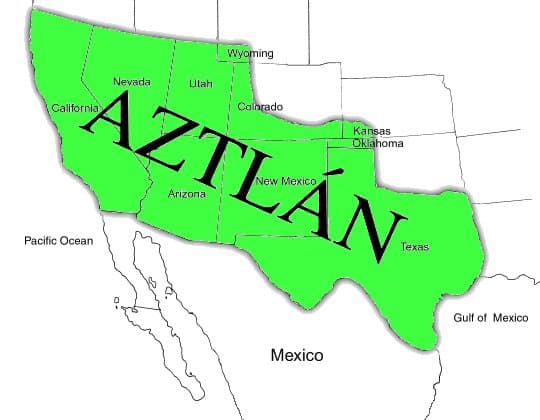
Also, there would be a significant minority of opponents of secession remaining in seceding territories. At present, there is a great deal of territorial mixing of racial, cultural, ethic, religious, socioeconomic and political groups. Indeed, much of the supposed political divide between the red and blue states is really not so much a matter of division between states as much as between cities and countryside. Often the red/blue divide can be broken down along precinct or neighborhood lines. Whites are often as divided among themselves on racial and social issues as they are with minorities. Of course, it might be possible to divide states into federations of what amounted to self-governing cities, counties, and towns. Government in larger metropolitan areas could be broken down by municipal district or neighborhood.
There is also the question of how to go about building popular support for secession. It is likely the Left and Right and the coalitions of de facto political tribes the two major parties represent will continue to fight for control over the central government rather than agree to peaceful separation. Secessionist sympathies will continue to tilt leftward under Republicans, and rightward under Democrats. It also goes without saying that any secessionist effort by advocates of white identity will be attacked by the entire range of elite opinion, and much of mainstream opinion. When he was still alive, Thomas Naylor, who was a left-communitarian and anti-racist, was viciously attacked by the Left for his alliance with the League of the South. Kirkpatrick Sale continues to be attacked for the same reason. Even if secession became popular, blocks of secessionists of different ideological tendencies might refuse to associate with each other.
The following comments from a Facebook poster illustrate very well how I am regarded by the hard Left:
Much of the rhetorical centre of “National-Anarchism” in the U.S. is around “Attack the System,” a website run by former anarchist Keith Preston. It advocates “Pan-Secession,” a neo-Confederate idea that different ideological groups should revolt against the “Empire” and go their own way: be that religious fundamentalist theocracy, ultra-conservative social repression, enforced racial separatism, or a murderously violent anti-Semitism. A kind of multi cultural de-centralized totalitarianism.
Many leftists have told me they are for secession by leftist movements only, although this would seem to defeat the purpose of secession, which is the peaceful co-existence of otherwise irreconcilable political factions. Leftist and liberals often react hysterically to the idea of white, conservative secession.
It seems that many so-called progressives cannot bear the idea that with secession, some states would develop more conservative polices for themselves and others more liberal ones. Instead, they want strong central government to redistribute wealth and impose ostensibly progressive values on the entire society. In much of the leftist worldview, the entire range of non-leftist thought is implicitly regarded as a conspiracy to oppress blacks, persecute gays, and exterminate Jews. They counter this by a de facto jihad against “straight white cisgendered Christian male privilege.” Of course, many leftist goals could be more easily advanced if the Left did not have to share political spaces with the Right. Seceded blue states could become havens for social democratic economic policies, gay anti-discrimination laws, and transgender restrooms.
If all the conservatives moved out, it would be much easier for progressives to build their utopia. Why don’t they encourage an exodus? It may be because the mere idea of a society that openly rejects their values is intolerable to them. Committed leftists often appear to thrive on righteous indignation. Conservatives would be delighted if progressives just disappeared; progressives regard their values as universally applicable and feel compelled to impose their values on every society everywhere. Progressives regard white separatism as an even more offensive variation of gated communities, both of which they see as upholding what they consider to be illegitimate race and class hierarchies.
Nevertheless, the prospect of ever-escalating political and social tensions will probably have the effect of making secession increasingly attractive. Secessionist movements and movements for the self-determination of unique peoples exist on every continent and in most nations. This creates the possibility for a new political paradigm that favors self-determination for all, from Basques to the indigenous people of the Andes, from Afrikaners to black African tribes, from Chechens and Kurds to Tibetans and Palestinians. If Americans eventually discover that they have irreconcilable and intolerable differences, the idea of secession may once again enter mainstream political discourse.















